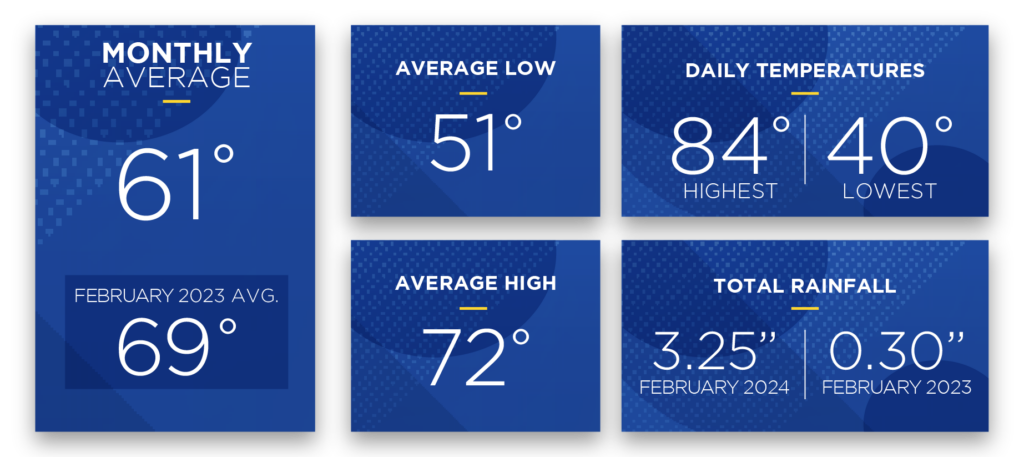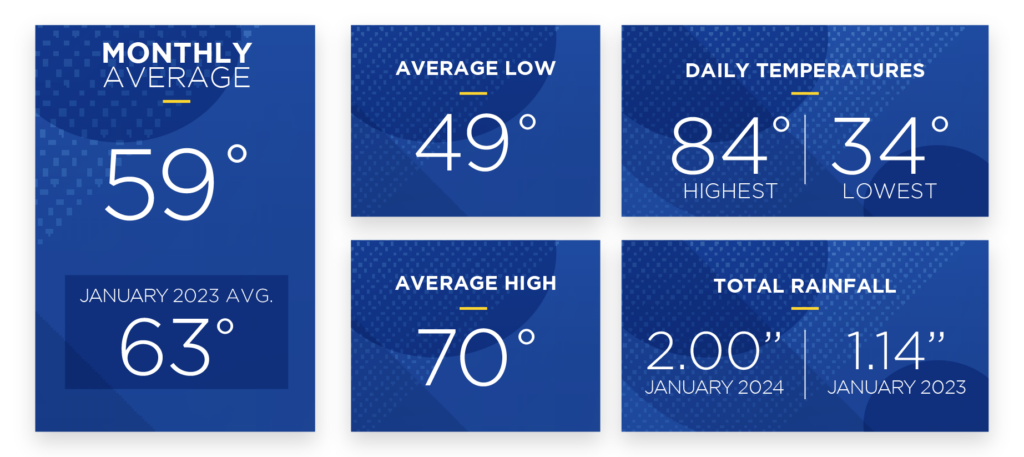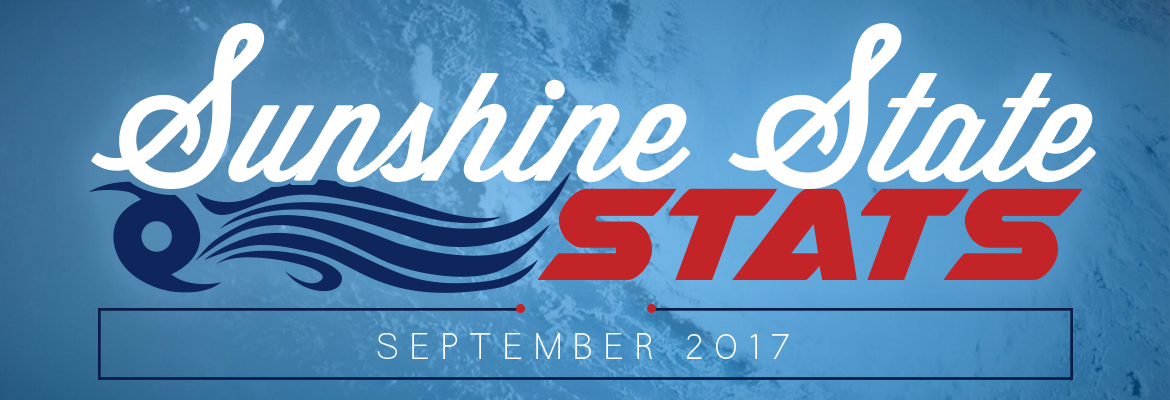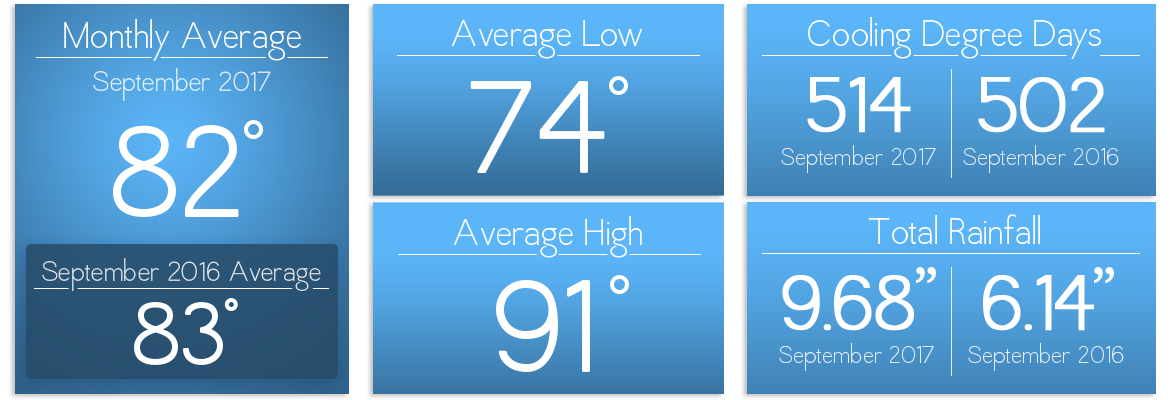March 2024 Sunshine State Stats
In March 2024, the average high and low temperatures rose substantially over February. The month’s lowest temperature of 47 degrees was 7 degrees higher than in February, while the highest temperature of 88 degrees was 4 degrees higher than last month. Central Florida is headed away from the coolest part of the year into milder spring weather. The average high of 79 degrees matches the “normal” temperature for March, while the average low of 60 degrees was two degrees warmer than usual, as recorded at Leesburg International Airport (KLEE).
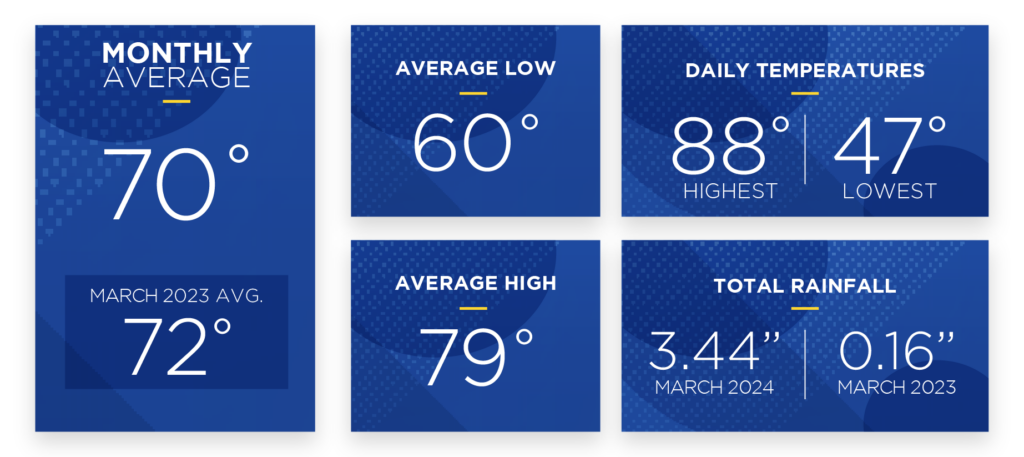
Reported rainfall increased slightly from February, totaling 3.44 inches. This total is .59 inches lower than the average March precipitation level of 4.03 inches, but significantly higher than a year ago when only .16 inches fell. Measurable precipitation was limited to just 7 of 31 days and the rainiest days were March 10 and 22, when 1.14 inches fell.
March recorded its highest temperature of 88 degrees on the 9th. The lowest daily recorded temperature of 47 degrees was on the 20th, one day after the lowest measured high temp of 67 degrees.
Thunderstorm activity within a 20-mile radius of Leesburg International Airport was much higher in the first half of March than in the second half. WeatherSentry recorded 2045 cloud-to-ground lightning strikes on March 2, 3, 6, and 10, while only 182 strikes were recorded on March 18 and 27.
Lightning Archive Report – 20-mile radius from Leesburg International Airport (KLEE)
Data and charts provided by weathersentry.dtn.com
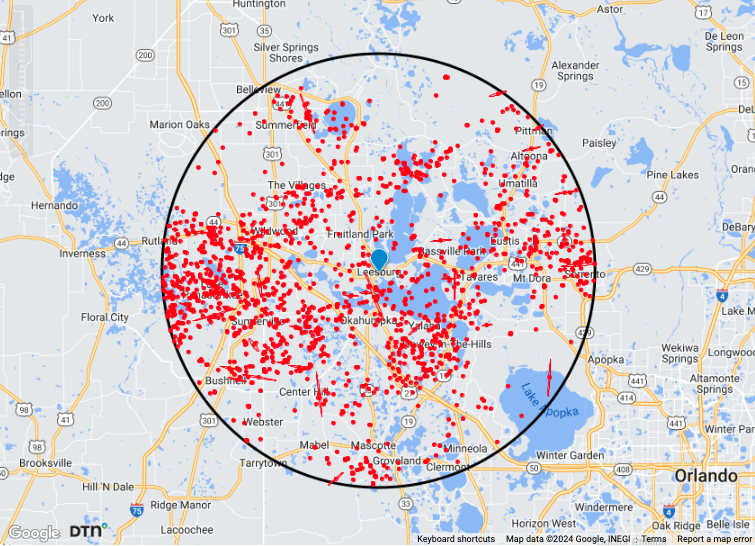
Cloud to Ground Lightning – March 1-14, 2024 (2045 strikes)
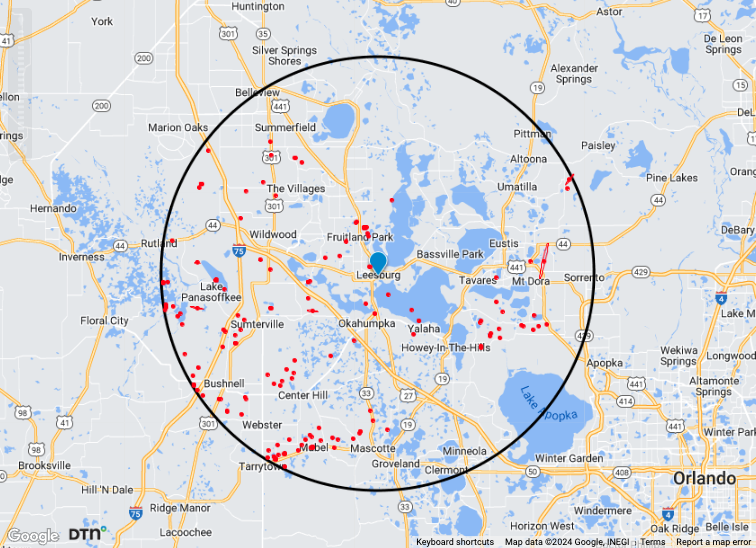
Cloud to Ground Lightning – March 15–31, 2024 (182 strikes)
The increase in thunderstorm activity is a reminder to those who own a backup power generator to be sure the unit is in safe operating condition. In 2023, lightning was the single highest cause of power outages in the SECO Energy service area. SECO offers a meter-based surge arrester designed to protect large appliances (motors and compressors) by reducing surges at the meter BEFORE they enter the home. Members can lease or purchase the “Surge MitiGator” by filling out a contact form.
HVAC is the largest energy user in Central Florida homes, accounting for an average of 35 to 40% of kWh usage. As daytime temperatures are rising into the 80s and 90s, many households may notice an increase in energy costs. Be sure to check your thermostat settings to properly update them for these warmer months. The energy-efficient thermostat setting during hotter months is 78 degrees.
April forecast from The Old Farmer’s Almanac:
The weather outlook for April 2024 begins with sunny and warm temperatures with scattered showers in the first two weeks. The following two weeks are expected to deliver isolated showers to heavy rain while temps remain mild to warm.
Online Energy-Efficiency Tools
Log into SmartHub to view past bills and consumption charts to check historical usage. If you want help in reducing your energy usage, SECO offers several energy-efficiency tools to help you identify energy wasters. Take the Home Energy Assessment to receive a detailed email tailored to your home’s features and lifestyle. The energy-saving advice will provide low-cost ways to decrease your usage – and your electric bill.
To easily calculate how much energy your appliances, lighting, electronic devices, and other energy-using items in your home consume, use the Energy Estimator.





